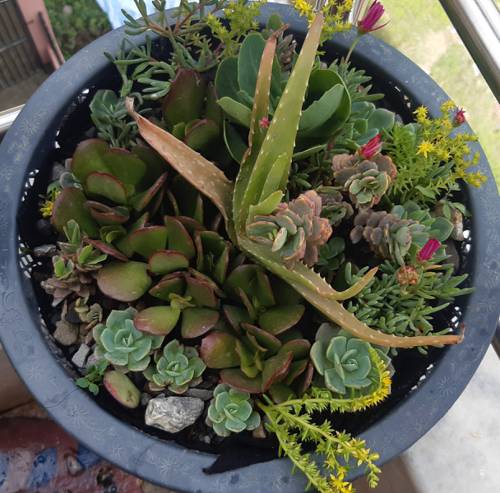
FAQ About Indoor Plant Migration: Seasonal Shifts

What is indoor plant migration?
Indoor plant migration refers to the strategic movement of potted plants within indoor environments to optimize their exposure to seasonal changes and light availability. It involves relocating plants to different spots in your home or office as the seasons change to ensure they receive adequate sunlight, warm temperatures, and humidity levels that are ideal for their growth.

Why is seasonal migration important for indoor plants?
Seasonal migration is crucial because it helps indoor plants to adapt to the changing environmental conditions throughout the year. Different seasons bring variations in light intensity, temperature, and humidity, which can significantly affect plant growth. By moving plants to locations where these needs are better met, you can enhance their growth, prevent stress, and decrease the likelihood of disease or pest infestations.

How do I know when it's time to move my indoor plants?
You should consider moving your indoor plants when you notice significant changes in natural light due to seasonal transitions, such as longer or shorter daylight hours. Signs that indicate your plant may need relocating include leggy growth, yellowing leaves, or slower growth rates. Also, you might need to relocate plants before the start of a heating season, when indoor air becomes drier and warmer.

What are the best locations for indoor plants during winter?
During winter, it’s ideal to place indoor plants near windows that receive the most sunlight, typically south or west-facing windows in the northern hemisphere. Ensure the plants are not exposed to cold drafts or heaters, which can cause damage. If natural light is insufficient, consider using grow lights to provide the necessary illumination during the shorter days.

How can I protect my indoor plants from drafts during the cold season?
To protect indoor plants from drafts during colder seasons, avoid placing them near doors, windows that are frequently opened, or next to radiators. You can use draft protectors on windows and doors to mitigate cold air entering the room. Additionally, moving plants to more centralized locations away from drafty areas can help minimize exposure to sudden temperature changes.

Are there specific plants that require more movement throughout the year?
Yes, some plants like orchids, ferns, and tropical species can be more sensitive to changes in light and temperature, requiring more frequent relocation to maintain their ideal growing conditions. These plants often benefit from being placed in spots with consistent humidity and temperature, and away from direct sunlight except during certain parts of the year.

What should I consider before moving indoor plants?
Before moving indoor plants, consider the light requirements, temperature preferences, and humidity needs of each species. Also, ensure the new location provides similar or better conditions than their current spot. It's helpful to acclimatize the plant gradually by moving it over a few days to prevent shock from sudden environmental changes.

How does light exposure change for indoor plants in different seasons?
Light exposure for indoor plants can vary greatly with the seasons. In summer, days are longer and light intensity is higher, which benefits many sun-loving plants but may stress shade-preferring species. In winter, shorter days and lower sunlight intensity can hinder growth, while spring and fall offer more balanced conditions. Adjusting plant location according to these changes ensures they get the right amount of light year-round.

Can the frequent movement of plants induce stress?
Yes, frequent movement can stress some plants if not managed correctly, leading to leaf drop, wilting, or stunted growth. To minimize stress, changes should be gradual and based on the plant's specific needs. Allow them time to adjust between moves and always ensure new locations provide the suitable environment parameters such as light, temperature, and humidity.

What role does humidity play in indoor plant migration?
Humidity plays a significant role in the health of indoor plants. Many houseplants thrive in humid environments, and during dry seasons like winter, indoor air can become particularly arid. When deciding where to move your plants, consider areas with higher humidity, such as bathrooms or kitchens, or use humidity-increasing devices like a humidifier.

How can I simulate ideal growing conditions for plants that cannot be relocated easily?
For plants that are difficult to move, you can simulate better conditions through resources such as artificial lighting, humidifiers, and temperature control tools. Grow lights can help when natural light is insufficient, especially during winter. Humidifiers or pebble trays can mitigate dry air conditions, and ensuring stable indoor temperatures by adjusting heating or cooling systems can significantly benefit stationary plants.

Are there types of indoor plants that do not require seasonal relocation?
Some hardy species like snake plants, pothos, and ZZ plants can typically withstand a wider range of indoor conditions and might not need seasonal relocation. These plants are more forgiving of changes in light and temperature, making them ideal for less-adjustable environments.

How do temperature changes affect indoor plant health?
Temperature changes can have significant effects on indoor plant health. Cold air can damage sensitive plant tissues, leading to blackened leaves, while hot, dry air can result in dehydration and wilting. Keeping plants in stable temperature conditions, particularly away from radiators or air conditioners, is crucial for maintaining their health throughout the year.

What is the impact of artificial lighting on indoor plant migration?
Artificial lighting can supplement natural light, especially in winter months when daylight is limited. Strategic use of LED grow lights or fluorescent lights can help maintain necessary energy levels for photosynthesis, preventing growth slowdowns. This reduces the need to migrate plants significantly, providing more flexibility in plant location choices.

How can I acclimate my indoor plants to a new position?
To acclimate indoor plants to a new location, make gradual adjustments over several days. Start by moving the plant to the new position for only a few hours each day, gradually increasing its time in the new spot. Monitor the plant for signs of stress, such as leaf yellowing or wilting, and if necessary, slow down the transition process.

Is there any specific time in the year that is best for repotting indoor plants?
The best time to repot indoor plants is typically in early spring, as this is when many plants begin their active growth phase. Repotting during this time allows plants to settle into their new pots and environments before the peak growing season, minimizing stress and promoting healthy development.

What are some common mistakes to avoid during plant migration?
Common mistakes include moving plants too quickly, not considering changes in light and temperature needs, and failing to acclimate plants to new conditions properly. Also, be cautious of relocating plants near drafts, heaters, or in direct sunlight, which can lead to wilting or sunburn.

How often should I water my indoor plants when moving them for seasonal shifts?
Watering frequency can change when you move plants, as their environmental conditions such as temperature and light exposure fluctuate. During relocation, closely monitor the soil moisture and adjust watering schedules as needed. Over-watering or under-watering can be detrimental, so it’s important to base watering on the specific needs of the plant.

Are there mobile solutions for ensuring optimal humidity for indoor plants?
Yes, using mobile humidifiers or placing trays with water and pebbles beneath the plant containers can help maintain suitable humidity levels. These solutions are particularly helpful in drier winter months when indoor heating systems can significantly drop indoor humidity, affecting plant health.

What signs indicate a plant needs to be moved to another location?
Indicators that a plant might need relocation include yellowing leaves, leggy growth from reaching for light, wilting, browning leaf tips, or slowed growth. These signs suggest the plant may not be receiving enough light, or might be too cold or dry in its current location, prompting a strategic move to a more suitable one.
